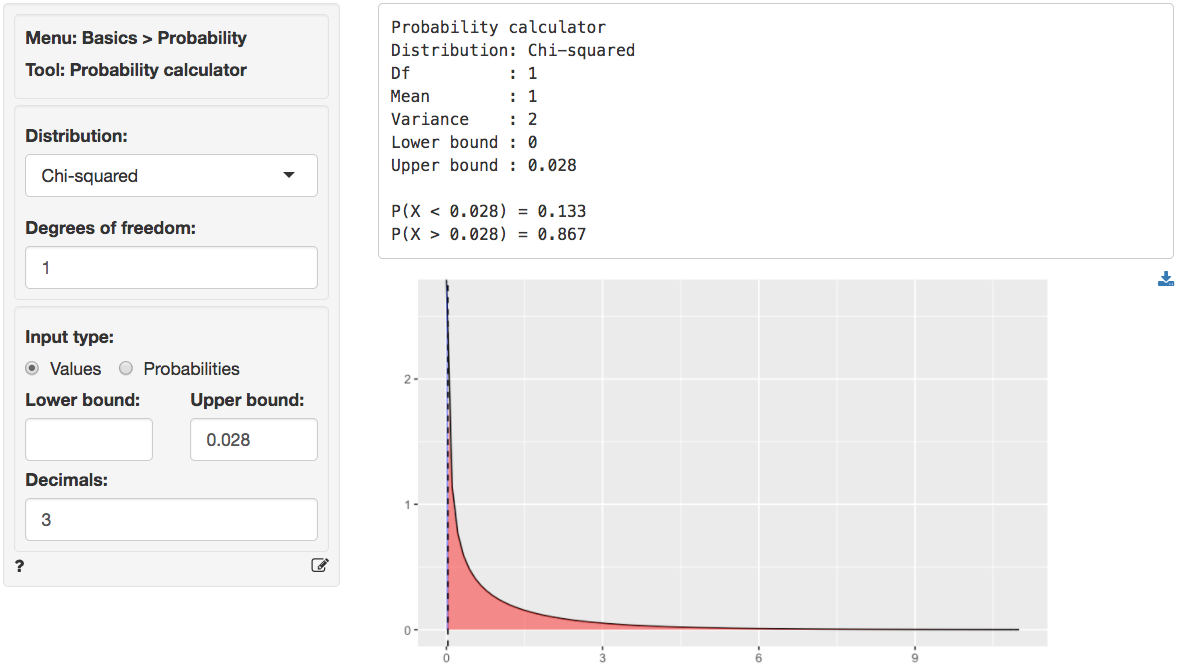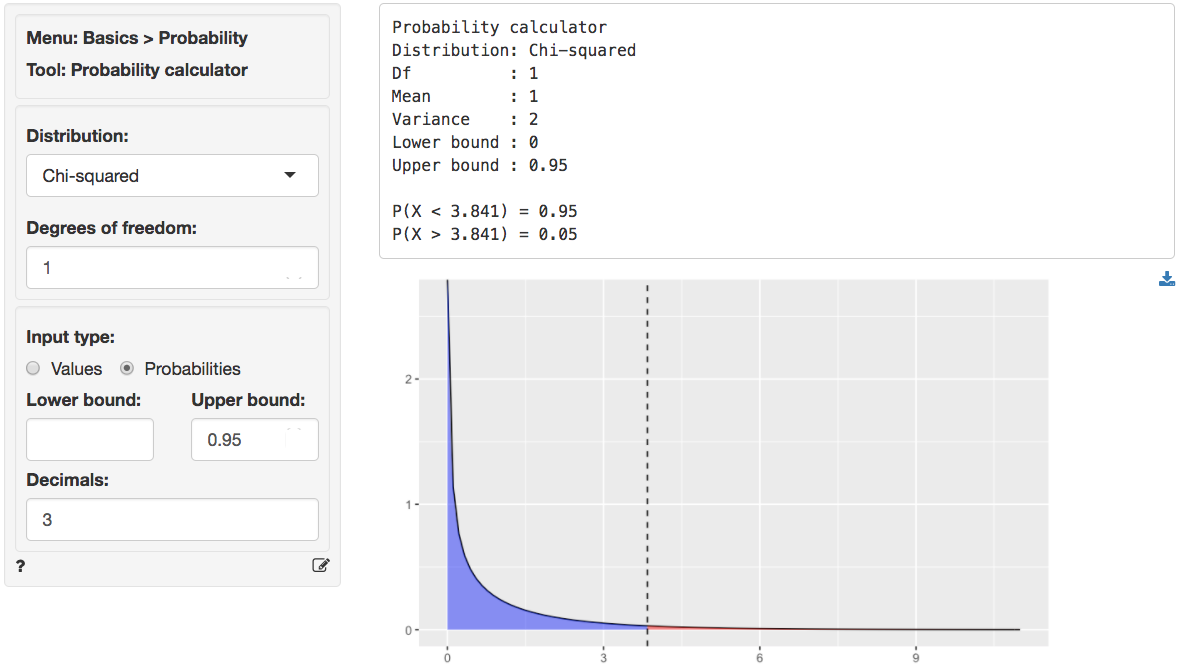

This test is right-tailed.ĭistribution for the test: where df = 3 – 1 = 2. The expected frequencies are 25 (for two heads), 50 (for one head), and 25 (for zero heads or both tails). Since X = the number of heads, the observed frequencies are 20 (for two heads), 57 (for one head), and 23 (for zero heads or both tails). (There are 0, 1, or 2 heads in the flip of two coins.) Therefore, the number of cells is three. Random Variable: Let X = the number of heads in one flip of the two coins. The question, “Are the coins fair?” is the same as saying, “Does the distribution of the coins (20 HH, 27 HT, 30 TH, 23 TT) fit the expected distribution?” Out of 100 flips, you would expect 25 HH, 25 HT, 25 TH, and 25 TT. The sample space for flipping two fair coins is. This problem can be set up as a goodness-of-fit problem. Make sure you clear any lists before you start. Enter the degrees of freedom and press calculate or draw. Enter the list names for the Observed list and the Expected list. To run the test, put the observed values (the data) into a first list and the expected values (the values you expect if the null hypothesis is true) into a second list.

The newer TI-84 calculators have in STAT TESTS the test Chi2 GOF. 000006 (rounded to six decimal places), which is the p-value. Rounded to four places, you should see 5.77E-6 =. Press 7 or Arrow down to 7:χ2cdf and press ENTER. Rounded to 2 decimal places, you should see 29.65. Arrow over to list 元 and up to the name area "元". Make sure to clear lists L1, L2, and 元 if they have data in them (see the note at the end of (Figure)). H a: The “number of televisions” distribution of far western United States families is different from the “number of televisions” distribution of the American population.ĭistribution for the test: where df = (the number of cells) – 1 = 5 – 1 = 4. H 0: The “number of televisions” distribution of far western United States families is the same as the “number of televisions” distribution of the American population. For example, instead of 60, enter 0.10*600. In the TI calculators, you can let the calculator do the math. Therefore, the expected frequencies are 60, 96, 330, 66, and 48. The expected frequencies are shown in (Figure). To get expected ( E) frequencies, multiply the percentage by 600. The first table contains expected percentages. This problem asks you to test whether the far western United States families distribution fits the distribution of the American families. The dfs are the number of cells – 1 = 5 – 1 = 4 (Use a computer or calculator to find the p-value.

To find the p-value, calculate P( χ 2 > 3). Make a chart with the following headings and fill in the columns: This time, calculate the χ 2 test statistic by hand. The values in the table are the observed ( O) values or data. These numbers are the expected ( E) values. If the absent days occur with equal frequencies, then, out of 60 absent days (the total in the sample: 15 + 12 + 9 + 9 + 15 = 60), there would be 12 absences on Monday, 12 on Tuesday, 12 on Wednesday, 12 on Thursday, and 12 on Friday. H a: The absent days occur with unequal frequencies, that is, they do not fit a uniform distribution.H 0: The absent days occur with equal frequencies, that is, they fit a uniform distribution.


 0 kommentar(er)
0 kommentar(er)
